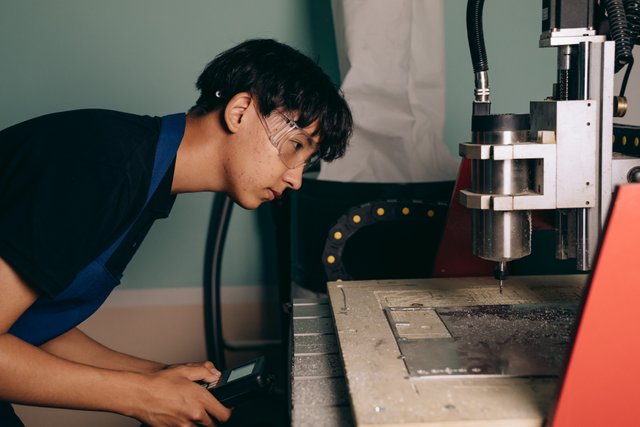
Man-made brainpower (man-made intelligence) and AI (ML) are two trendy expressions that have been overwhelming the tech business as of late. These technologies, which range from chatbots that provide customer support to predictive algorithms that assist us in making decisions, have developed rapidly and are becoming increasingly integrated into our day-to-day lives.
The term "artificial intelligence" (AI) refers to many different subfields, including "machine learning." As a rule, man-made intelligence alludes to the capacity of machines to perform errands that would ordinarily require human insight, for example, perceiving designs, simply deciding, and gaining a fact. In contrast, machine learning is a subset of artificial intelligence that focuses on creating systems that can learn from data and improve without being explicitly programmed.

The capacity of machine learning to recognize patterns and trends in large datasets is one of its most important characteristics. This is especially helpful in industries like finance, healthcare, and marketing where a lot of data needs to be quickly and accurately analyzed. The ability to train machine learning algorithms to recognize patterns and make predictions based on previous data can assist businesses in making better decisions and boosting their bottom lines.
One more benefit of AI is its capacity to robotize assignments that would typically require human mediation. In the field of image recognition, for instance, Machine Learning algorithms can be trained to identify and categorize objects based on their characteristics. This can be used in a variety of ways, such as assisting self-driving cars in recognizing road obstacles or assisting doctors in recognizing cancerous tumours in medical images.

However, a lot of responsibility comes with a lot of power. Bias and discrimination may arise as the complexity of Machine Learning algorithms increases. This is due to the fact that Machine Learning algorithms learn from past data, which may reflect stereotypes and societal biases. These biases may be perpetuated and amplified by the algorithms if they are not addressed, leading to outcomes that are unfair or discriminatory.
In order to address this issue, Machine Learning has placed a growing emphasis on fairness, accountability, and transparency. Algorithmic auditing and fairness metrics are two examples of the new methods and tools being developed by researchers and practitioners to identify and reduce bias in machine learning algorithms. Additionally, there is a push for datasets that are more inclusive and diverse, which has the potential to aid in the reduction of bias and boost the effectiveness of machine learning algorithms across all populations.
Taking everything into account, Man-made reasoning and AI can possibly change the manner in which we live and work. They can assist us with pursuing better choices, mechanize drawn-out undertakings, and further develop proficiency and exactness in a large number of ventures. Nonetheless, it is essential that we approach these advancements with watchfulness and care, and attempt to guarantee that they are created and sent in a fair and moral way. We can use the power of AI and machine learning to build a society that is more fair and just.
Additionally, ML and AI are having a significant impact on education. These innovations are being utilized to foster insightful mentoring frameworks, which can customize the growth opportunity for every understudy in view of their singular necessities and capacities. AI calculations can break down understudy execution information and give designated criticism and proposals to progress.

AI and ML are also being used to make education more accessible and inclusive, in addition to personalized learning. Natural language processing (NLP) and speech recognition technology, for instance, can assist students with language learning difficulties in comprehending and producing written texts, while speech recognition technology can help students with hearing impairments participate more fully in classroom discussions.
However, as with any new technology, AI and ML's potential to harm jobs and the economy are also a source of concern. A few specialists stress that computerization and artificial intelligence will prompt far and wide work dislodging, especially in businesses that depend vigorously on dreary or routine undertakings.
While there might be some momentary work uprooting because of computer-based intelligence and ML, perceiving the potential for new position creation and financial growth is additionally significant. In point of fact, a lot of experts are of the opinion that AI and ML will bring about new employment opportunities in fields like data science, machine learning engineering, and AI ethics, as well as new opportunities for innovation and entrepreneurship.
In conclusion, machine learning (ML) and artificial intelligence (AI) are technologies that are rapidly evolving and have the potential to change virtually every aspect of our lives, from education and healthcare to business and entertainment. These technologies certainly come with risks and difficulties, but they also have enormous potential for growth and positive impact. As we proceed, it will be critical to approach AI and ML with caution and care, working to ensure that they are developed and implemented in a manner that is equitable, ethical, and beneficial to all parties.